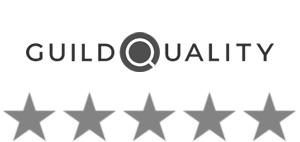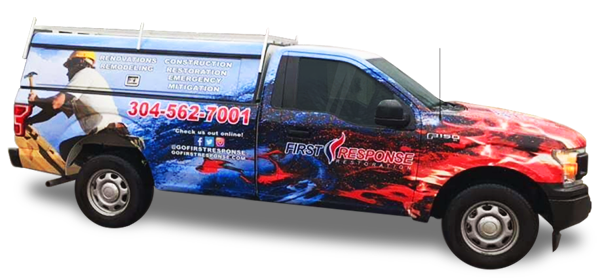Water damage can be a homeowner’s worst nightmare, causing not only damage to property but also health risks. Understanding the different categories of water damage is essential in determining the necessary restoration steps to take.
In this quick guide, we will discuss the three categories of water damage and their implications. By understanding these categories, you will be better equipped to identify the severity of the damage and take appropriate measures to restore your property.
Key Takeaways:
- Water damage has three categories, each with varying levels of severity and restoration measures.
- Category 1 water damage is clean water and considered relatively harmless, but can escalate if not treated promptly.
- Category 2 water damage is gray water that may contain contaminants or pollutants and requires caution when dealing with it.
- Category 3 water damage is black water, highly contaminated and hazardous, requiring professional assistance for restoration.
- Assessing the severity of water damage is critical for determining the appropriate restoration steps to take.
- Restoration steps typically include water extraction, drying, dehumidification, cleaning, and disinfection.
- Consulting professionals for restoration is crucial for minimizing long-term effects and restoring your property to its original condition.
Category 1 Water Damage
Category 1 water damage, also known as clean water damage, refers to water that comes from sanitary sources, such as broken pipes or overflowing sinks. This type of water damage is considered relatively harmless, and it does not pose an immediate threat to your health. However, it is important to take quick action and address the issue to prevent it from escalating into a higher category.
In a Category 1 water damage scenario, you can take some precautions to mitigate the damage. The first step is to turn off the source of the water if possible. Then, remove any standing water and dry out the affected area completely. You can use fans, dehumidifiers, or other drying equipment to speed up the process. It is also recommended to disinfect the area to prevent any microbial growth.
However, if the water damage has affected a large area or has been left untreated for an extended period, it is best to seek professional help. Trained technicians have the expertise and equipment to handle even the most severe Category 1 water damage situations. They can assess the extent of the damage, detect hidden moisture, and take the necessary steps to restore your property to its original condition.
Category 2 Water Damage
Category 2 water damage, also known as gray water damage, involves water that may contain contaminants or pollutants. This includes water from washing machines, dishwashers, or toilet overflow (without feces). Although not as dangerous as category 3, proper precautions are necessary when dealing with this type of water damage.
| Characteristics of Category 2 Water Damage | Precautions to Take |
|---|---|
| Water may contain chemical or biological pollutants that can cause illness or irritation |
|
| Water may have an unpleasant odor |
|
| Water can damage building materials, such as drywall and carpeting |
|
If your property has experienced category 2 water damage, it is recommended to seek professional assistance for safe and effective restoration.
Category 3 Water Damage
Category 3 water damage is the most severe and hazardous type of water damage. It involves highly contaminated water that may contain pathogens, toxins, or sewage. This water can cause serious health risks and should be dealt with immediately by professionals.
Some common sources of category 3 water damage include:
| Source | Description |
|---|---|
| Floodwaters | Water from natural disasters or heavy rainfall that can contain debris, mud, and other pollutants. |
| Toilet backflows with feces | Water from overflowing toilets that contains human waste and harmful bacteria. |
| Standing water with microbial growth | Water that has been stagnant for an extended period and has developed mold and harmful bacteria. |
Category 3 water damage requires immediate professional attention. Avoid contact with the water and any contaminated items, and evacuate the affected area if necessary. Professionals will use specialized equipment and techniques to remove the water, clean and disinfect the area, and prevent further damage.
Assessing the Severity of Water Damage
Assessing the severity of water damage is crucial for determining the appropriate restoration measures. The severity of water damage can range from minor leaks to severe flooding that can compromise the structural integrity of the affected areas. Water damage can have severe consequences if left unaddressed, including mold growth, structural damage, and health hazards. Therefore, it is essential to assess the severity of water damage as soon as possible.
Professionals use various techniques to evaluate the extent of water damage and categorize it accordingly. The following are some methods that professionals use for assessing the severity of water damage:
| Method | Description |
|---|---|
| Visual Inspection | Professionals visually inspect the affected areas to identify signs of water damage, including discoloration, warping, and stains. This helps determine the extent of the damage and the necessary restoration procedures. |
| Moisture Meters | Moisture meters are used to measure the moisture content of various materials, including walls, ceilings, and floors. This helps identify the presence of moisture in concealed areas and determine the extent of the damage. |
| Thermal Imaging | Thermal imaging uses infrared technology to detect temperature differences, which can indicate the presence of moisture. This helps professionals determine the extent of the water damage and identify potential sources of moisture. |
The severity and category of the water damage will influence the intensity and duration of the restoration process. Therefore, it is crucial to assess the severity of water damage accurately to determine the appropriate restoration measures.
Steps for Water Damage Restoration
Restoring your property after water damage involves specific steps to effectively mitigate the damage and restore the affected areas. The severity and category of the water damage will influence the intensity and duration of the restoration process.
Step 1: Water Extraction
The first step in water damage restoration is to remove any excess water from the affected area. This can be done through the use of pumps, vacuums, and other specialized equipment. The goal is to extract as much water as possible to prevent further damage and reduce the drying time.
Step 2: Drying
After water extraction, the affected area must be thoroughly dried. This involves using specialized equipment, such as high-powered fans and dehumidifiers, to remove moisture from the air and surfaces. The drying process can take several days to complete, depending on the severity of the damage.
Step 3: Dehumidification
Dehumidification is a critical step in preventing mold growth and other secondary damage. It involves using specialized equipment to remove excess moisture from the air and surfaces. Professionals may also use moisture meters to monitor the humidity levels and ensure that the dehumidification process is effective.
Step 4: Cleaning and Disinfection
After the drying and dehumidification process, the affected area will need to be thoroughly cleaned and disinfected. This involves removing any remaining debris or mold growth and sanitizing the area to prevent the growth of harmful bacteria or other pathogens. Professionals may also use specialized equipment, such as air scrubbers, to help purify the air and remove any lingering odors.
Step 5: Restoration
The final step in the water damage restoration process is to restore any damaged or affected areas to their original condition. This may involve repairing or replacing drywall, flooring, or other structural components. Professionals will work with you to ensure that the restoration process is completed to your satisfaction.
Conclusion
Now that you understand the three categories of water damage, you can take the necessary steps to address any water-related issues in your home or property. Remember to assess the severity of the damage using appropriate techniques and seek professional assistance as needed. By taking quick and effective action, you can minimize the long-term effects of water damage and restore your property to its original condition.
FAQ
What are the three categories of water damage?
The three categories of water damage are Category 1, Category 2, and Category 3.
What is Category 1 water damage?
Category 1 water damage refers to clean water sources, such as broken water supply lines or overflowing sinks.
What is Category 2 water damage?
Category 2 water damage, also known as gray water damage, involves water that may contain contaminants or pollutants.
What is Category 3 water damage?
Category 3 water damage, also referred to as black water damage, is the most severe and hazardous. It involves highly contaminated water that may contain pathogens, toxins, or sewage.
How is the severity of water damage assessed?
The severity of water damage is assessed through techniques such as visual inspection, moisture meters, and thermal imaging.
What are the steps for water damage restoration?
The steps for water damage restoration typically include water extraction, drying, dehumidification, cleaning, and disinfection.
Why is it important to understand the categories of water damage?
Understanding the categories of water damage is crucial for dealing with and restoring any water-related issues in your home or property. Each category requires different precautions and restoration techniques.
When should I consult professionals for water damage restoration?
It is recommended to consult professionals for water damage restoration, especially for Category 2 and Category 3 water damage. Professional assistance is crucial to ensure proper cleanup and mitigation of any health risks associated with contaminated water.
How can I minimize the long-term effects of water damage?
Minimize the long-term effects of water damage by taking quick and appropriate action. Assess the severity of the damage, consult professionals, and follow the necessary restoration steps to restore your property to its original condition.

















